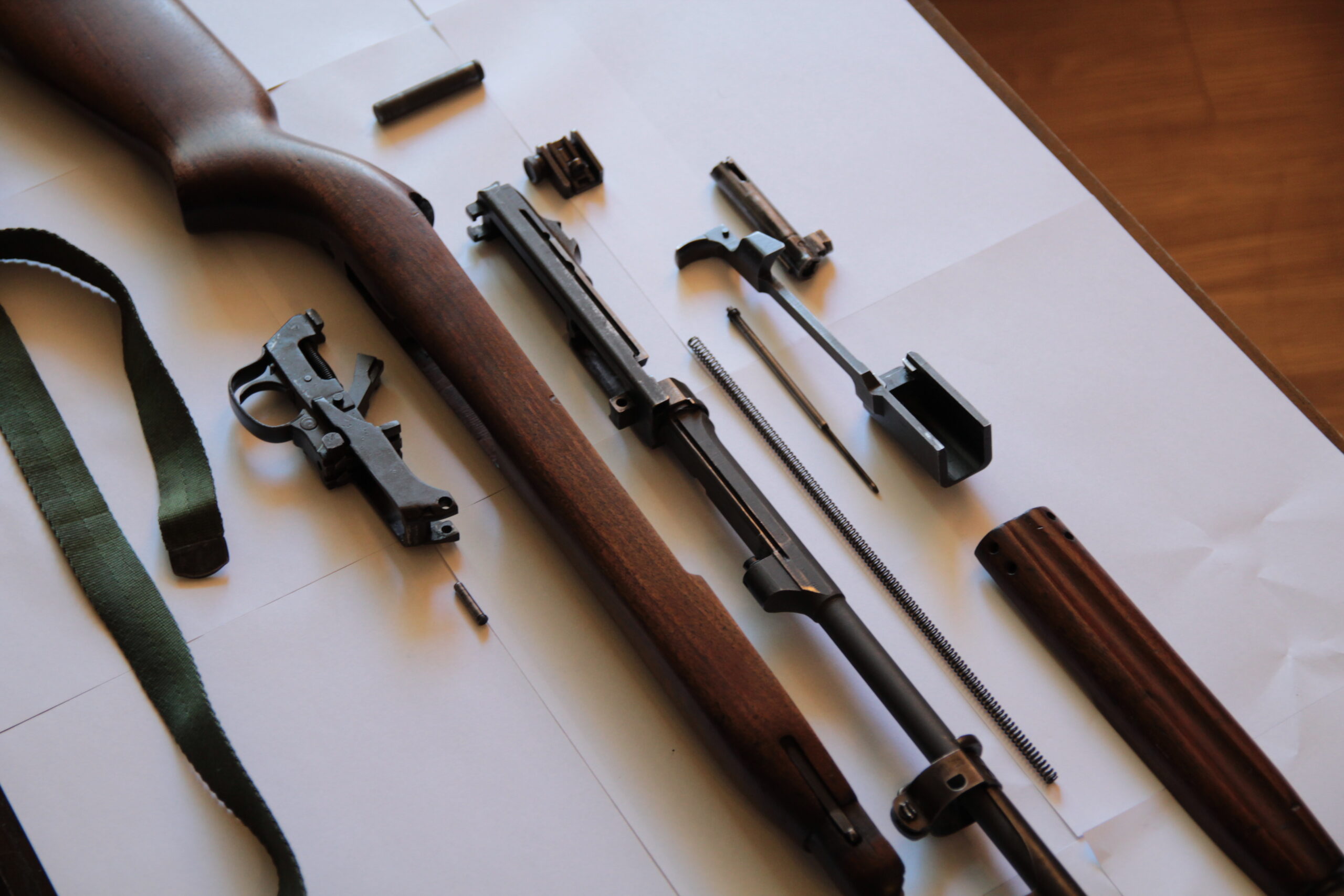The M1 Carbine in a nutshell
The M1 Carbine is the most fun semi-automatic rifle in existence. Yeah I said it. It’s short, light, and the platform is perfectly matched to the cartridge. If you ride motorcycles then the M1 Carbine is like the super moto of rifles. If you are not smiling when you’re shooting then you probably just don’t like shooting. M1 Carbines have a charm that modern platforms are lacking. There is something special about a steel receiver, walnut stock, and parkerized finish. It just feels like it has a soul, you can see how much effort went into making it. It feels like its seen some shit. That M1 Carbine is still here, but the people who made it or fought with it are probably long gone.
Shooting the Carbine
Before I talk about anything else in this post I want to explain what it’s like to shoot the carbine, since that’s 95% of the reason I love this gun. This gun can’t be described in one word, but if I had to pick one it would be proportional, or fucking perfect. Yes that’s more than one word in a one word description. Life’s not fair, get used to it. This rifle is perfectly proportional, and by that I mean the length, weight, balance, and cartridge are perfectly matched.
There’s a good chance that whoever is reading this has never shot an M1 carbine, but probably has shot an AR. So in order to give you a frame of reference I’ll compare the two. This isn’t meant to be a platform debate, just an aid for your imagination. The M1 is short at just under 36″ and handy at 5.25 pounds. At this point there is some AR fanatic screaming into their computer “My AR is 5.25 pounds and 36 inches long!”. You can get some pretty light ARs, but they tend to be muzzle heavy once you drop below 6 pounds. This is because the AR was originally 6.5 pounds, had a fixed buttstock. Now everyone just has a buffer tube with a little adjustable stock, most of the weight is mid receiver-forward. It’s not that an AR is heavy, it’s just not as balanced as the M1.
Carbine Fit
Another thing you’ll notice is that the M1 has a traditional stock with drop at the comb and heel, vs the AR with a straight buffer tube. This is reason that ARs have a 1.5″ height over bore, it’s because your check weld is higher since there is no drop in the stock. When you shoulder an M1 everything just feels tighter and more compact. Your sights are right on top of the receiver and your height over bore is half that of an AR. The M1 receiver is also shorter, in length and height, than an AR. Since the M1 has a tradition pistol grip carved into the stock it feels way more natural to me. I shoot clays low gun, so I’ve mounted a shotgun 10 bajillion times. The M1 mounts like an upland bird gun and feels completely different than mounting an AR.
M1 Carbine Recoil
The round is such a good match for the gun it’s silly. The recoil impulse is a ka-chug like a Garand, but faster and with less recoil. The muzzle has a tendency to climb because there is no compensator or brake. The recoil is slightly more than AR, but since its a lower pressure round there is not nearly as much blast. Personally I find a 16″ AR with a brake to have almost no recoil, but a distracting amount of harsh blast. I actually prefer the slightly increased recoil of the M1 over the increased noise of an AR.
Alot of people would probably try and compare it to a 9mm carbine (PCC). This is in the ball part in terms of total recoil, but the impulse is super different since most PCCs are straight blowback. My CZ scorpion doesn’t kick much, but somehow manages to clack my back teeth together. The M1 Recoils more but over a longer perceived time, and there is not a 1lb bolt flying back and forth.
This last one is gonna sound weird if you’ve never shot old wood stocked guns. It smells better than an AR. Yeah I said it. An AR is made of scentless polymer, aluminum and steel. The only thing that has a smell to it is the burning powder and oil/grease. With an M1 you also have black walnut finished in linseed oil. It sounds sexy because it is. Once you run a few rounds though it and wood start to heat up you basically have the manliest Glade Plugin on the planet.
M1 Carbine History
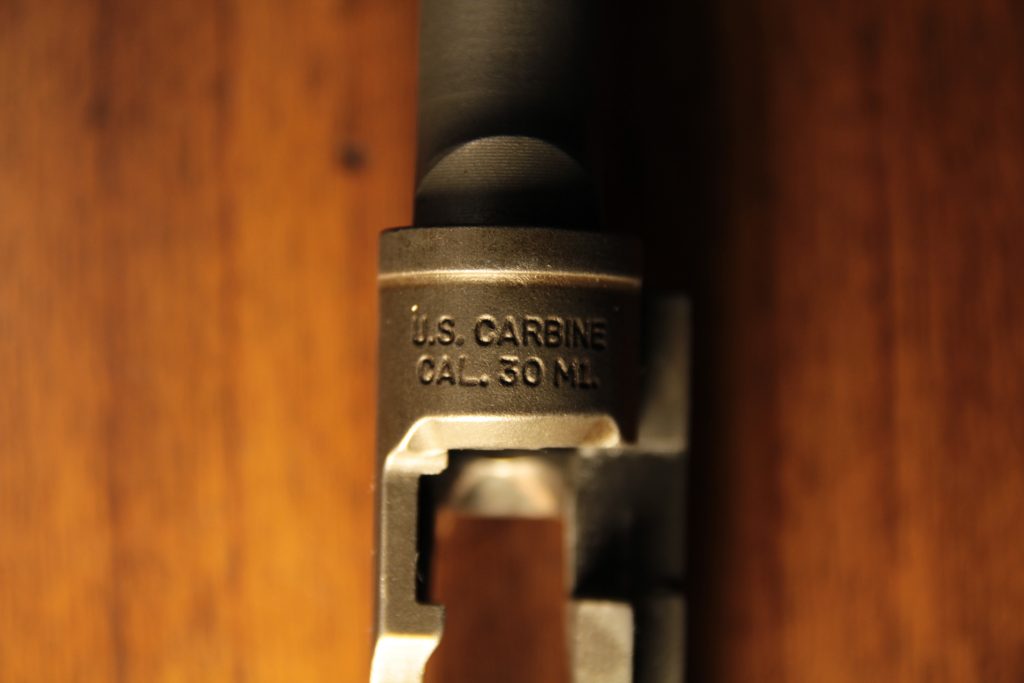
Front of Receiver
The M1 Carbine came into the world because of John Moses Browning’s brother, a guy in jail named David Marshall Williams, and a team of 5 resourceful engineers at Winchester. In the late 30s the government put out a request for a light rifle that would fill the gap between the heavy M1 Garand rifle and a 1911 pistol. Service men that operated radios, mortars, and other heavy shit got tiered of lugging around a 10 pound 24” barreled 30.06. They also felt that a side arm was ineffective in all but the closest encounters.
The Thompson submachine gun did offer an advantage to the 1911 (both chambered in 45 acp) due to the longer barrel, increased magazine capacity, and full auto happy button. All that being said the Thompson was still a 10-11 pound gun unloaded. So, Ed Browing (John’s Brother) started working on a design but died in 1939. Winchester then hired Williams once he got out of prison in the hopes that he would finish Ed’s designs. He had been designing a short stroke piston mechanism while he was incarcerated.
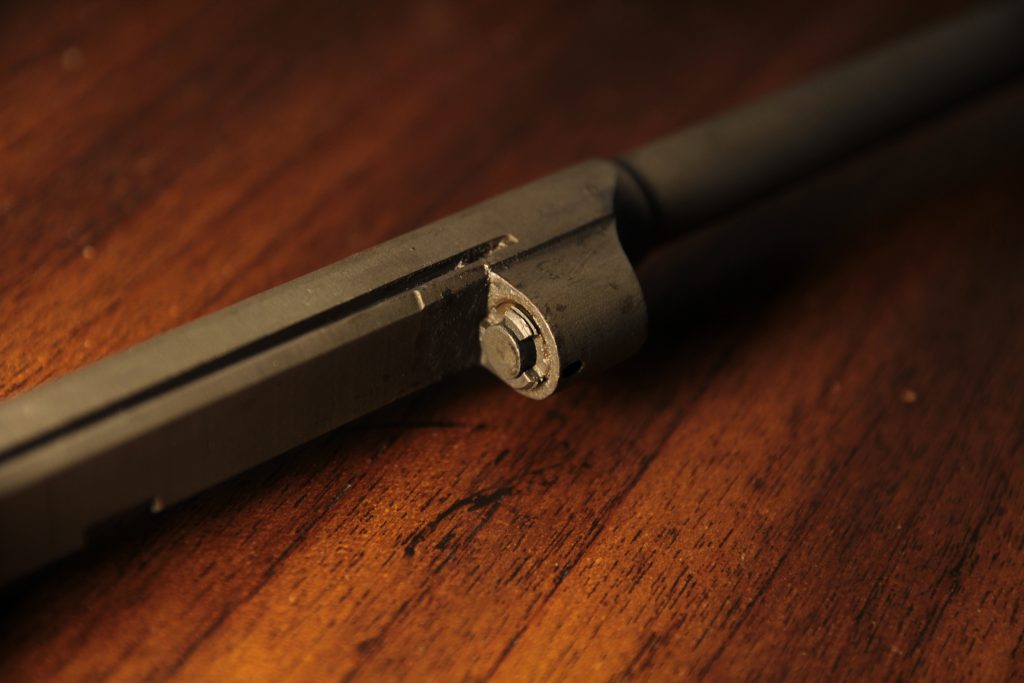
Retracted short stroke gas piston
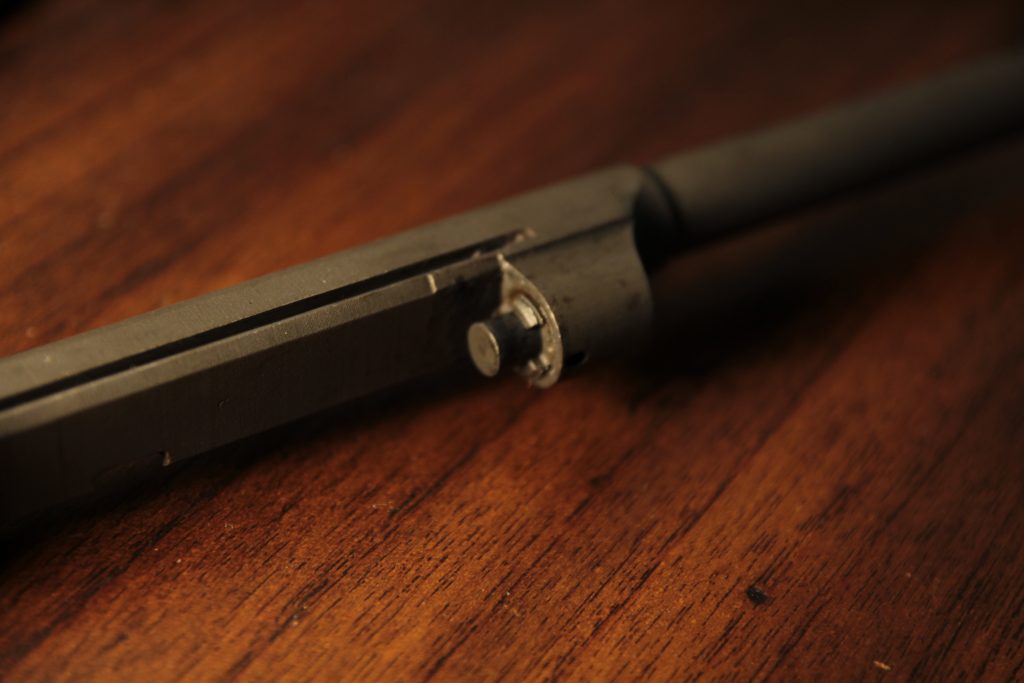
Extended gas piston
Williams was able to shave the M2 Rifle (not m2 carbine) down to 7.5 pounds from 9.5 pounds. The Feds said the rifle was too large and asked for it to be a 5lb gun. The Winchester team and Williams essentially split, and the Winchester team came up with a prototype in 13 days. Because they were fuckin ballers! It was a scaled down version of William’s last design.
They took the fire control group from an M1905, hacked an operating rod from a Garand, and chambered it in a rimless version of the .32 Winchester self-loading cartridge. It uses a short-stroke gas piston to cycle the action. A gas port on the barrel feeds a gas piston that pushes the operating rod. The movement of the operating rod unlocks the bolt and cycles the action. It was a hit, so they refined it and it was accepted by the Feds shortly after.
Original M1 Carbine Manufacturers
Everyone and their mother manufactured M1 carbines during WW2. They are credited with being some of the first firearms with truly interchangeable parts. Which makes sense considering they were the most produced firearm of WW2 at 6,100,000. They were manufactured by the following companies:
- Winchester Repeating Arms Company
- Inland Manufacturing Division (General Motors)
- Rock-Ola Manufacturing Corporation (a jukebox company)
- IBM (yes that IBM)
- Saginaw Steering Gear (General Motors)
- Underwood Elliot Fisher Company (type writer company)
- Quality Hardware and Machine
- Standard Products
- National Postal Meter
- Various components from Marlin firearms, Union Switch and Signal, Auto-Ordinance.
If you want to dive balls deep down an M1 carbine rabbit hole this is the site for you: uscarbinecal30.com They are on another level of historical accuracy and details. Thank God for retired people.
.30 Carbine Ammo
The standard load for the M1 Carbine is a 110 round nose with a muzzle velocity of 2000 fps out of a 18.5” barrel. The ballistics of the M1 Carbine were better than that of the Thompson, but not nearly as good as the Garand rifle. It was intended to be an intermediate cartridge and did it very well. You’ll see some people on forums posting stupid shit like how M1 Carbine rounds were unable to penetrate the frozen clothes of soldiers during the Korean war. I have nothing but respect for our servicemen that served in Korea, but the idea that the .30 carbine rounds didn’t penetrate frozen clothing is complete and utter nonsense. There have been numerous tests disproving it.
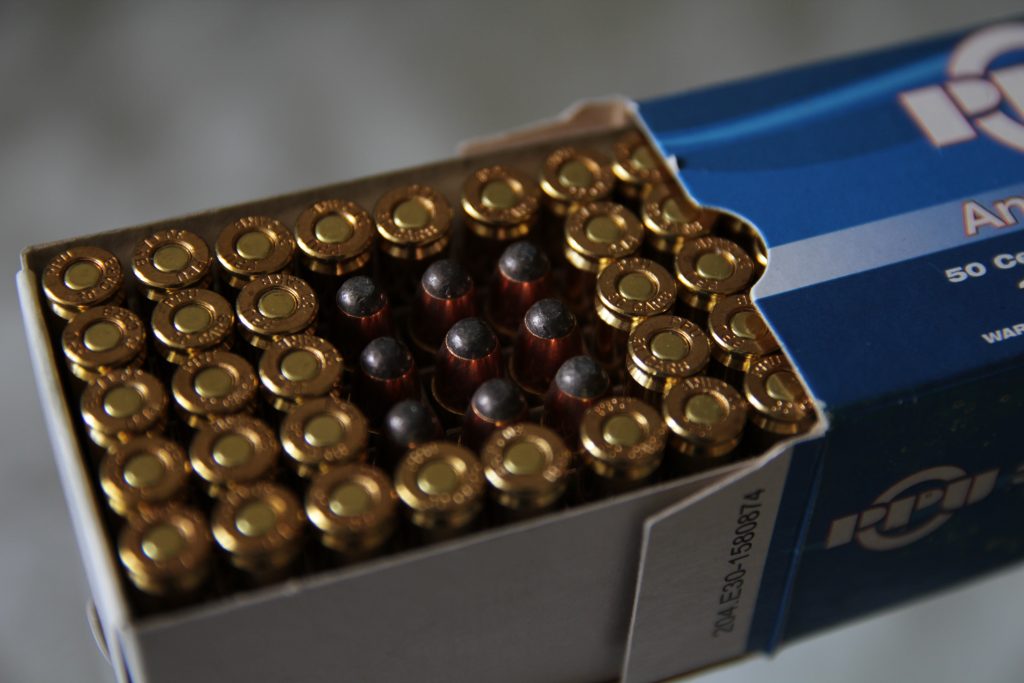
The Hauge convention of 1899 prevents hollow points from being used in military conflicts. The US and other countries have skirted this recent years by designing 5.56 rounds to yaw shortly after penetrating the body and snapping at the cannelure. Back in the 40s the M1 Carbine had to settle for a .30 caliber hole. Modern soft point and hollow point loads make the M1 Carbine a much more effective weapon.
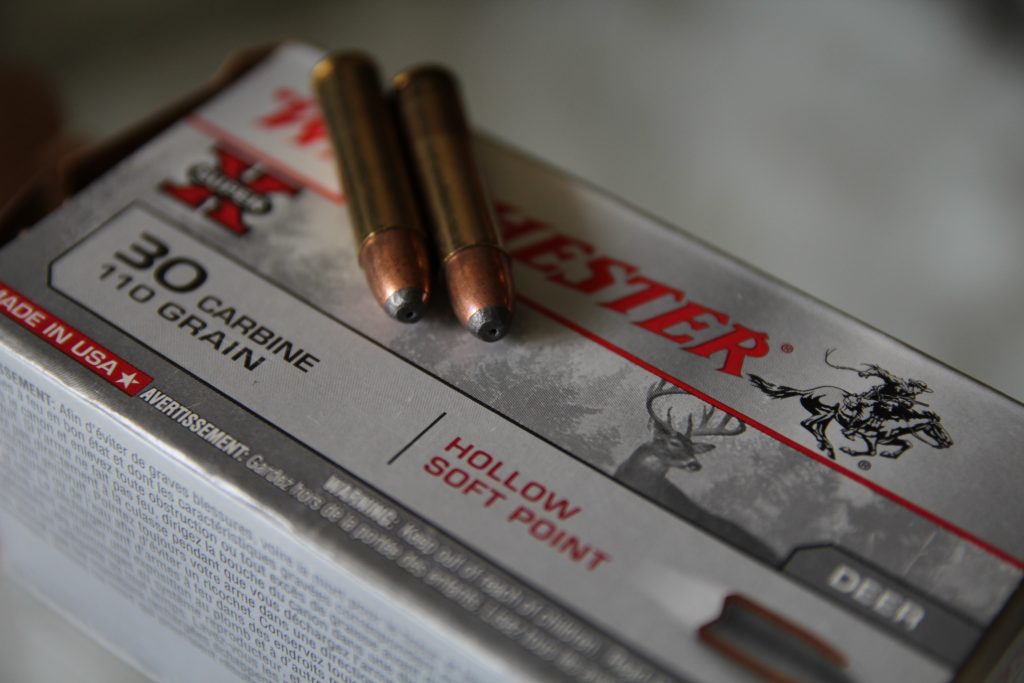
M1 Carbine Sights
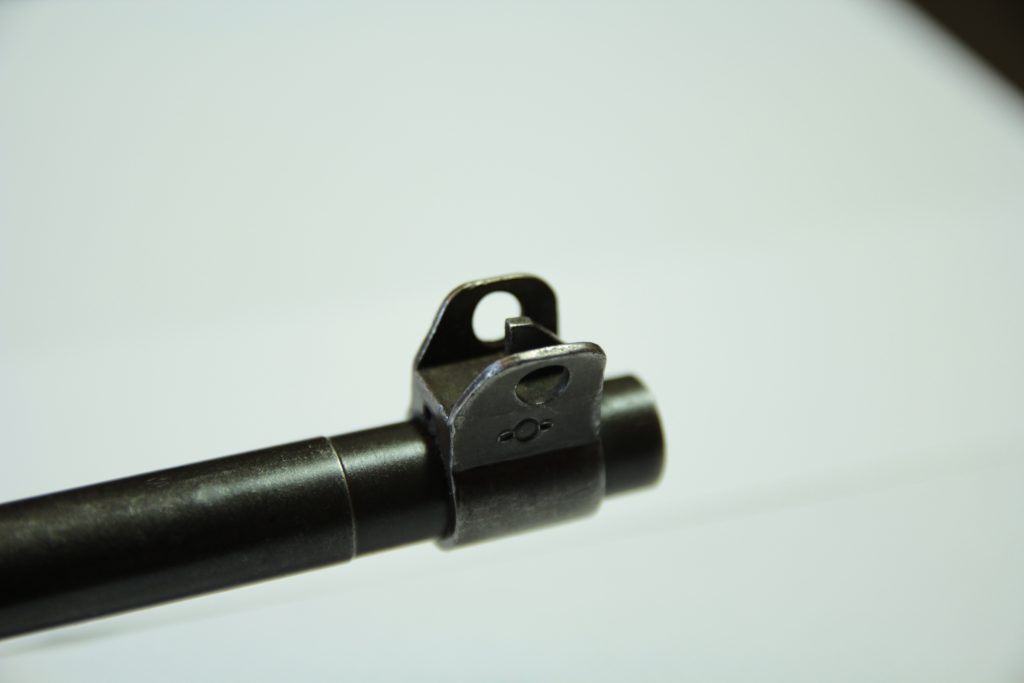
Front Sight assembly
The front sight is a blade with wings. Keep it simple stupid.
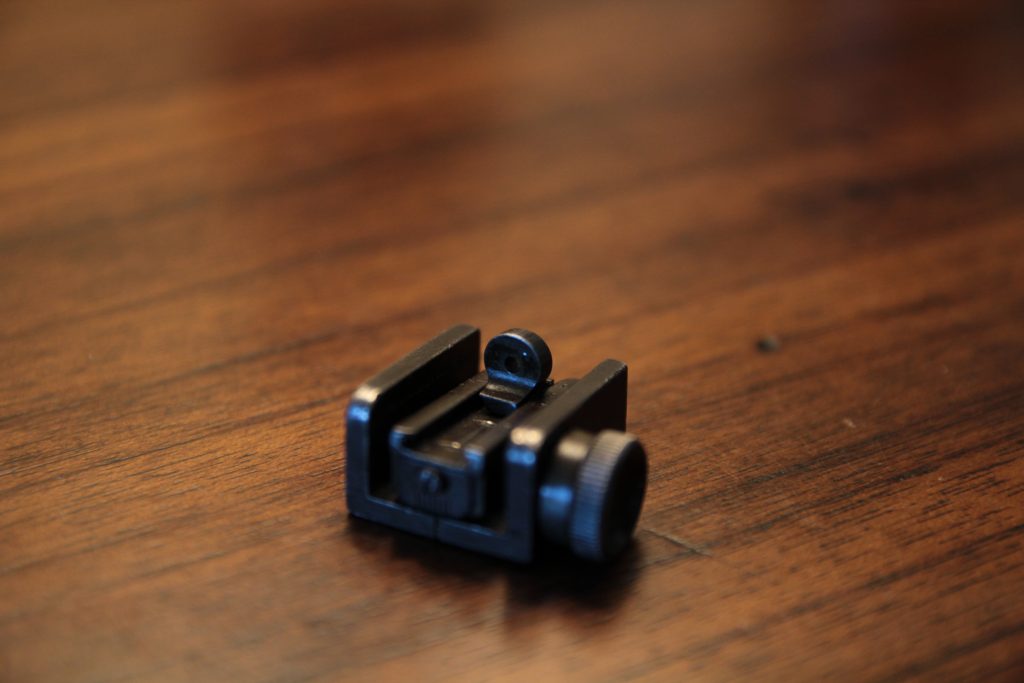
Milled adjustable rear sight
The original rear sights for the M1 carbine were a set of 90 dgree peeps dovetailed into the receiver that were zeroed for 150 and 300 yards. The second version of rear sights were a sliding ramp style peep that had notches for 100, 200, 250, and 300 yards. The second version of rear sight was also adjustable for windage.
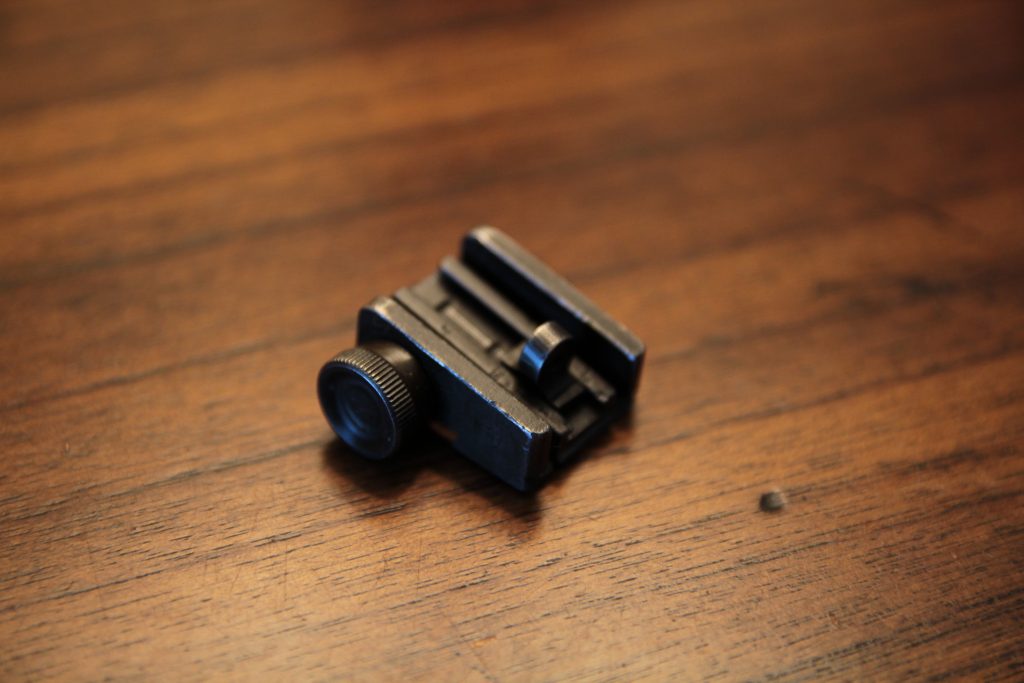
The .30 carbine starts to fall of a cliff ballistically past 300 yards, so the rear peep is only adjustable to 300.
M1A1 Carbine
The government requested a version of the 30 carbine suitable for paratroopers. Rather than reinventing the wheel the engineers at Inland just designed a side-folding stock that you could drop a standard M1 barreled action into. The stock was made of bent steel tubes and came with a steel butt-plate, steel check plate with leather cover, and walnut pistol grip. They are super handy and CMP versions are pretty rare. Chances are if you’re seen one in the wild it was probably a reproduction.
M2 Carbine
The m1 carbine was originally intended to be select fire, but the rush to get it into the field resulted in only semi-auto carbines seeing action for the majority of WW2. In the final days of WW2 some M1 Carbines were converted to select fire in the field, and some M2 Carbines made their way overseas.
M3 Carbine
The M3 carbine was essentially an M2 carbine with an infrared night vision scope on it. Yeah you read that right, we had full auto night vision rifles in WW2. They are reported to have caused 30% of the casualties on Okinawa. They were giant and had a huge battery. The night vision wasn’t very good by today’s standards, but was straight up Scifi for the times.
M1 Carbine Magazines
The original m1 carbines came with a 15 round box magazine as opposed to the 8 round enbloc clips of the Garand. During Korea and Vietnam 30 round magazines saw widespread use. Although the firepower doubled there were some feeding issues with the 30 rounders. 10 round stripper clips were used to speed up the loading process. The magazines were dropped via a magazine release button on the right side of the receiver. Then the operator would use a guide (sometimes called spoon guide) to receive the stripper clip and guide the rounds into the magazine. Nowadays the USGI 15 rounds magazines are considered the most reliable and are consequently the most sought after.

I’ve found magazines in the following capacities: 5, 10, 15, 20, 30. Some modern reproduction carbines have semi proprietary mags. I say semi because every once in a while, you can get a few rounds to feed. I couldn’t get auto ordinance mags to lock into the mag well on my Saginaw. Promag has an option, but I never could get it to function reliably in any of my carbines. Surprisingly enough there is a company called keepshooting.com that manufactures some great carbine mags.
I literally never heard of them before I started looking for 10 round carbine mags (California). I now have 5 and they all run flawlessly.
Stocks and Hardware
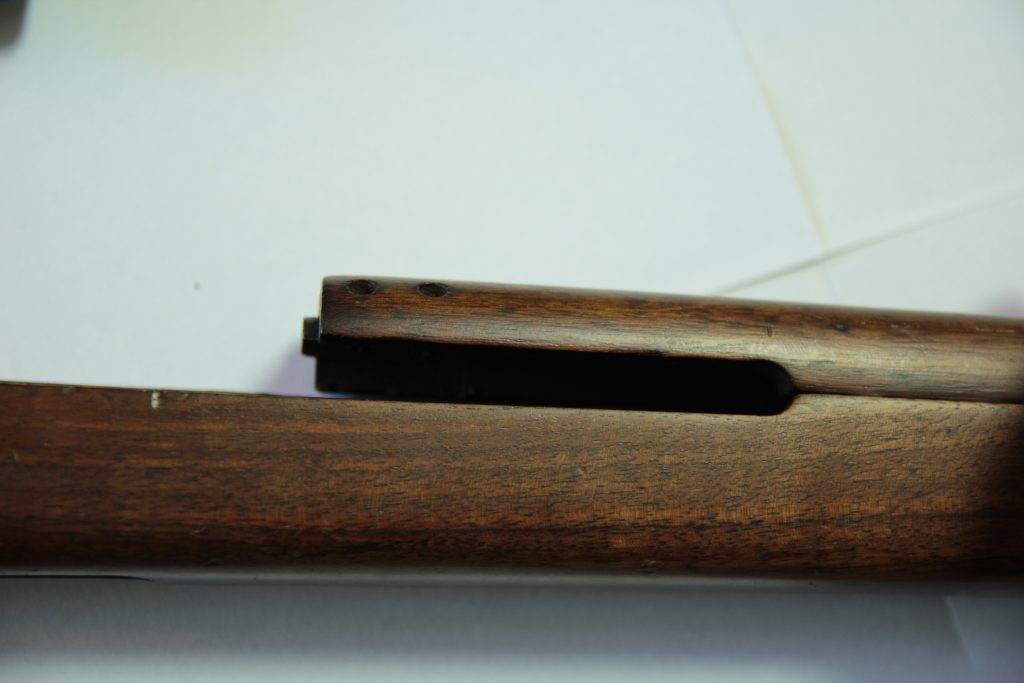
Low wood M1 carbine stock and handgaurd
This little carbine was primarily issued with a fixed walnut stock. The first versions of the carbine came with what is referred to as high wood. The stock and heat shield mostly cover the op rod. Later versions with “low wood” did not cover the op rod.
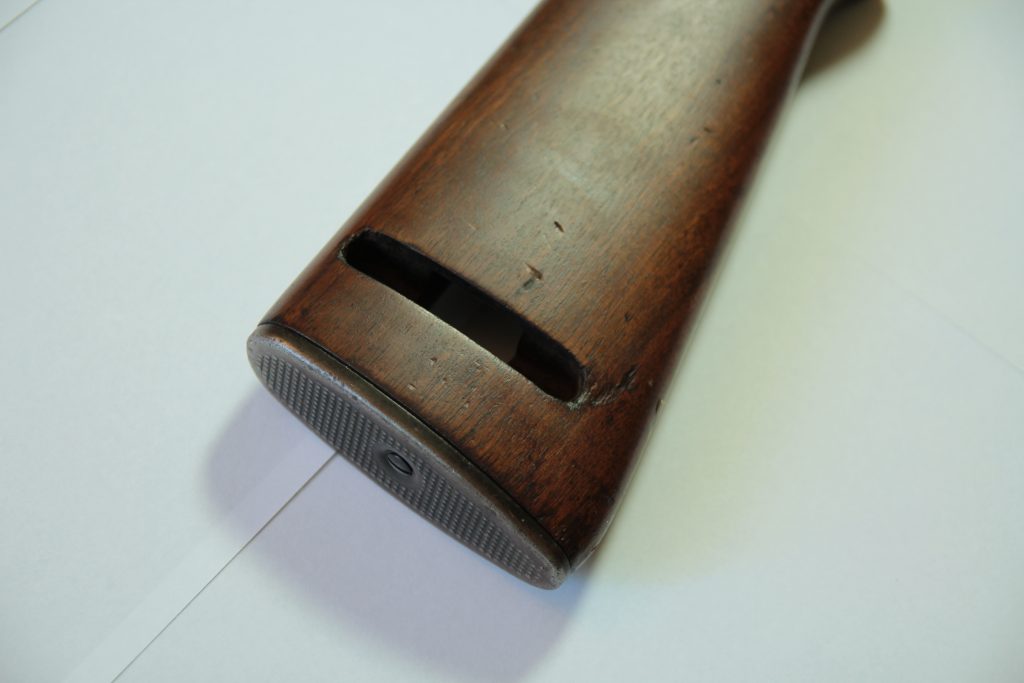
Oval cut for oiler and sling
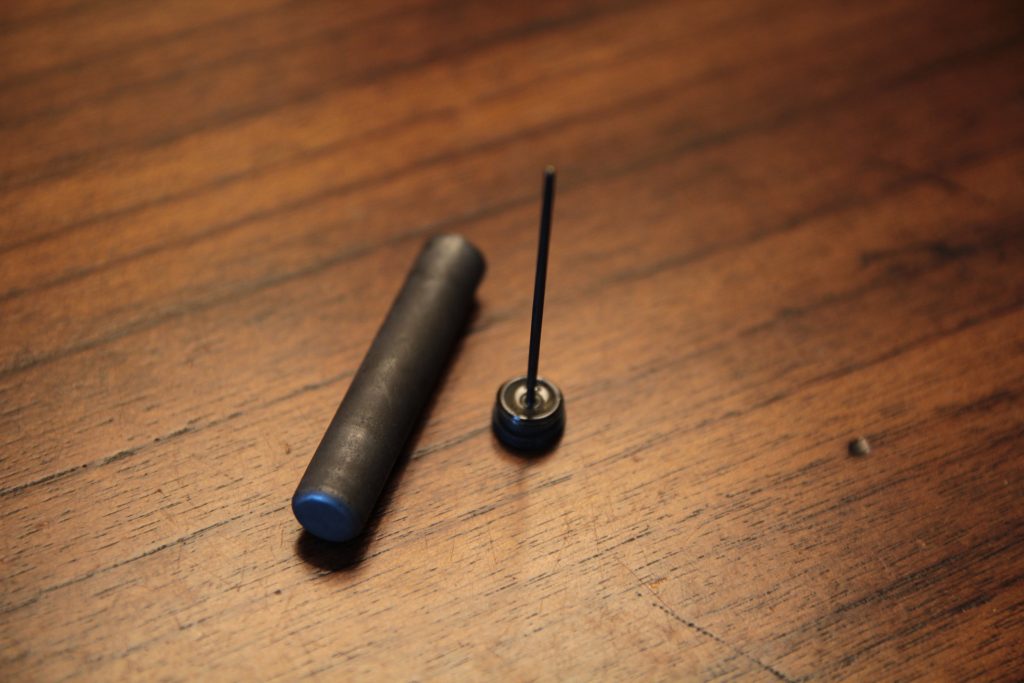
Oiler that is hidden in the stock
The rear of the stock has an oilier embedded in it. That oilier also acts as the rear sling attachment point. A side-folding wire stock with wooden pistol grip was created for paratroopers, and the originals are hard to find. Many reproductions are available.
M1 Carbine Safeties
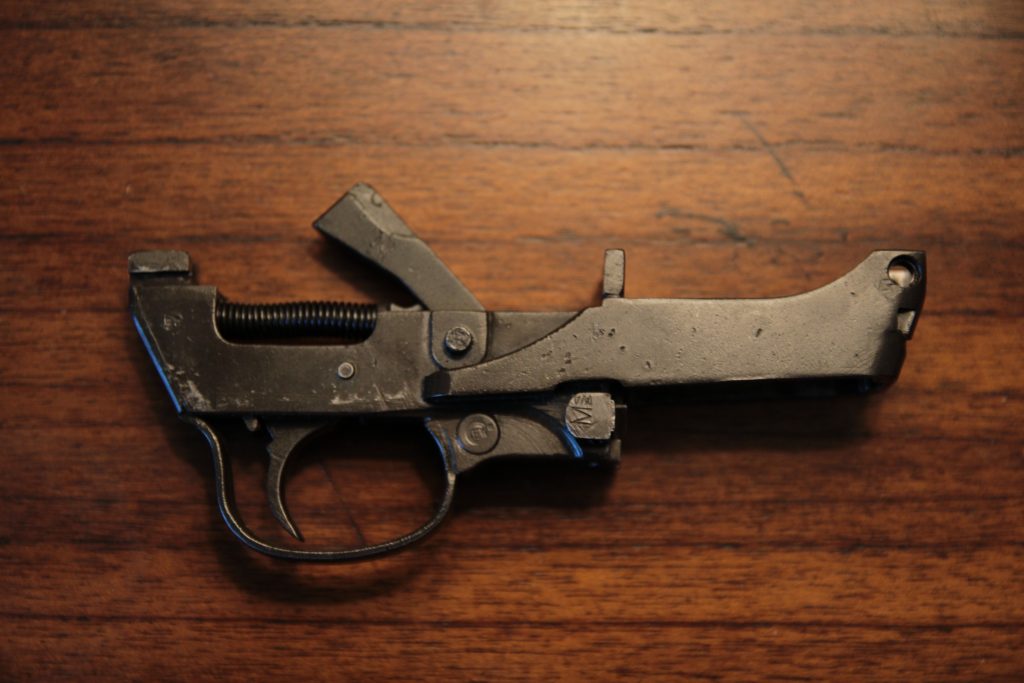
Assembled M1 Carbine trigger housing
You’ll run across to two types of safeties: a cross bolt and a 90 degree rotating lever. Apparently the cross bolt safety was too similar in size, and too close to the mag release. They switched the the rotating safety after too many people accidentally dropped their mags.
Barrel Band / Bayonet Lug
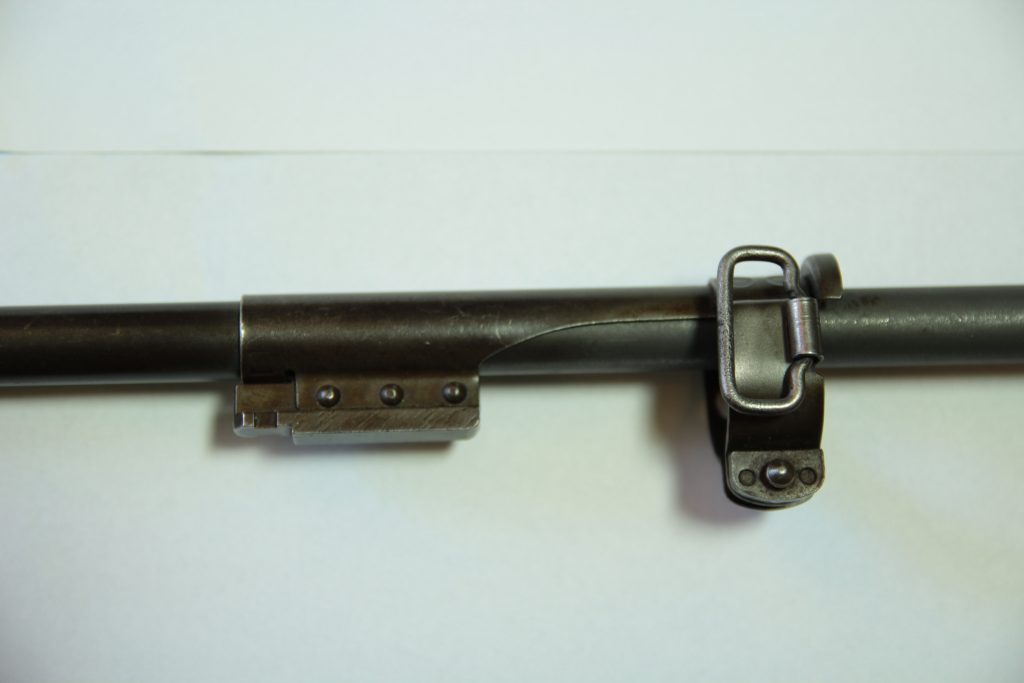
Bayonet lug, barrel band and front sling swivel
The early carbines had a simple barrel band with a an attached sling swivel. There are two separate versions (type 1&2) which serve the same basic purpose. The later versions (type 3) had an attached bayonet lug.
CMP Sales
So if 6,500,000 carbines were manufactured during WWII and almost all were shipped over seas, then how the hell did we get them back and into the civilian population? That’s easy, the Civilian Marksmanship Program (CMP). The CMP was established in 1903 by the Office of the Director of Civilian Marksmanship. Basically the government wanted to make sure that civilians knew how to shoot if/when they were called into service. The army ran the CMP from 1916 till 1996 when it became a government chartered civilian organization. The CMP has been selling rearsenaled Garands, carbines, 1903s, 1911s, .22 trainers…etc. As long as you are a member of a CMP affilited club and meet some basic requirements you’re good to go to buy from the CMP. The CMP generally offers multiple grades of firearms at somewhere between 50-75% of street price.
Modern M1 Carbines
The CMP only gets in carbines every once in a while, and will eventually run out permanently. Because of the finite number of GI carbines several outfits make modern reproductions. The same guys that did an amazing job detailing carbine history at uscarbinecal30.com also made a companion sight for post war reproductions m1carbinesinc.com They go deep on the 37 (yes you’re reading that right) companies that produced post-war carbines. If you’re at a gun show and considering picking up a repro, I’d take a look at their site first. I’m just going to cover the most common reproductions you’ll run into today.
Universal M1 Carbine
These guys started producing commercial M1 carbines in 1961 and originally used mostly GI parts bolted onto a cast receiver. When the GI parts dried up they redesigned the carbine and ran into pretty serious reliability issues. It’s understood that most of the early ones are good, and the later version are lemons.
Auto Ordinance M1 Carbine
One of the most popular reproductions is Karh Arm also know as Auto Ordinance. They use several cast components and the magazines seem to be proprietary. The wood is nice, and the finish looks pretty good. Some people have had good luck with them. My brother has one with a scout scope on it, and it is very accurate. We have had some first round feeding issues with hollow points and soft points. They seem to have super tight chambers compared to my CMP Saginaw. I’ve had trouble getting the Auto Ordinance to chamber reloads that I’ve run through my CMP Saginaw. You would think a full length resize would take care of case that had been fired through a sloppy chamber, not in this case.
Inland M1 Carbine
Recently someone started a company called Inland Manufacturing LLC and started cranking out carbines. They put out a bunch of hype to all the blogs and Youtube channels. They had a few good looking carbines on their website and at Shot Show. As near as I can tell it’s a bunch of bullshit. My dad bought one and it looks nothing like the pictures on the website. The receiver is not the same color as the barrel, and the wood looks painted or heavily stained. It doesn’t feed reliably with any ammo or magazine.
After we dug in further we realized that Inland Manufacturing LLC doesn’t make a damn thing. They just source parts and assemble. The receiver is cast, and the wood to metal fit is poor. Looks like they just cobbled together parts that are equal to or lower quality than Auto Ordinance and charged twice as much. Beware of companies that just buy up old names…
Fulton Armory M1 Carbine
Fulton armory makes the best current production M1 Carbine. They use brand new 4140 billets and heat treat per milspec. They also throw on brand new criterion barrels. All other components are either original GI or milspec reproductions. The wood is also hand picked and fit. They are also super expensive at $1500 a piece, but they are as close as you can get to a new production milspec carbine. If you’re looking for a beautiful gun that you wont feel guilty shooting all day every day then Fulton is the choice.

